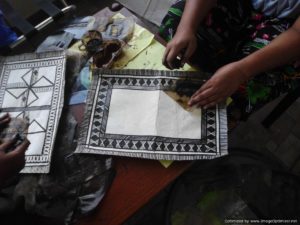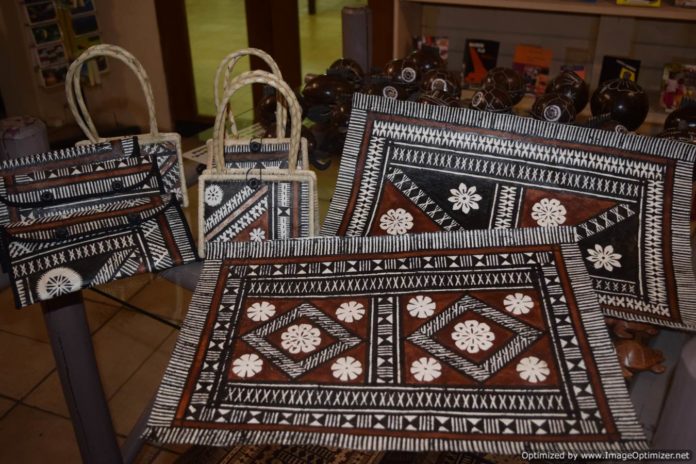Tapa is the generic term for bark-cloth of the Pacific. However, each Pacific Island nation has their own specific name. Masi is the traditional bark-cloth of Fiji.
Made from the paper mulberry tree, Broussonetia papyrifera, masi is made on several islands throughout Fiji. Vatulele Island is the most prolific at bark cloth production, with whole families partaking in masi making. The men plant, maintain and harvest the masi plants, and the women beat the bark and felt it into cloth.
 When masi is printed, it becomes masikesa. Kesa or print is applied with natural pigments from clay for reds and brown, and soot from burnt nuts or from kerosene lamps for black.
When masi is printed, it becomes masikesa. Kesa or print is applied with natural pigments from clay for reds and brown, and soot from burnt nuts or from kerosene lamps for black.
The island of Namuka-i-Lau produces a very fine print style with the use of stenciling. Motifs are laid in various angles throughout a sheet of masi whilst maintaining a harmonious balance. Motifs comprise of geometric shapes symbolizing plant and animal life, cultural items, clans, and the vanua, or land.
Masikesa from Namuka-i-Lau is very distinctive with a banded border of black and white stripes running along the perimeter of the masi, and the intricacy of both black and brown patterning throughout the work.
Masi is used in many traditional ceremonies. There are costumes for weddings and birthdays and for the installation of a chief. Each province in Fiji has their own vakamata or motifs, and during traditional ceremony, a trained eye can make out from where the wearer or donor hails.
There are less than 50 kesa artists from Namuka-i-lau practicing this art. Koto and Vitacini Matemosi are carrying on the legacy of their mother, Makareta Matemosi who was the designer of the Fiji Airways Logo. They print masi and fashion their barkcloth into costume, wall decorations and small crafts.
Masiworks by the Matemosi’s can be seen at the Fiji Museum and Namana Fiji Arts on the Coral Coast.





